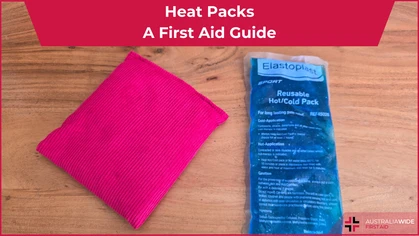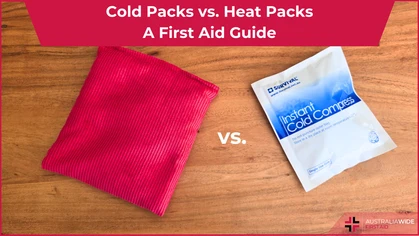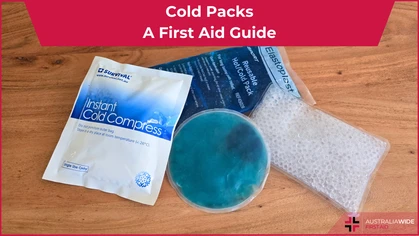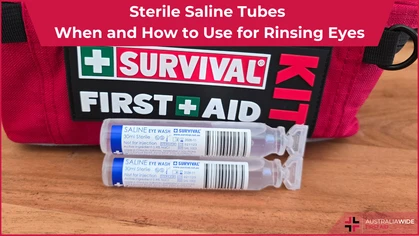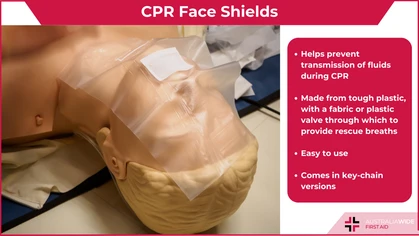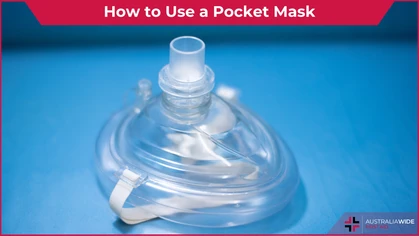AED Myth Busters

First Aid Equipment
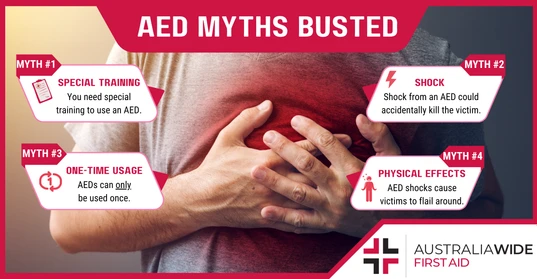
They are all busted
Cardiac arrest is the leading cause of death in Australia. Heart attacks are not the same thing. When compared, cardiac arrest is by far the more lethal of the two afflictions.Cardiac Arrest. Heart Attack. What’s the difference?
A heart attack is caused by a blocked artery. Cardiac arrest is when the heart muscle is affected, its beating restricted. The cause? A real life electrical problem. The heart is no longer able to pump, and vital organs of the body are being deprived of blood and oxygen. When a heart attack occurs, the victim is generally conscious and breathing throughout. Someone who suffers sudden cardiac arrest, however, would fall unconscious and be unable to breathe properly, often gasping for air. Every year, more than 33,000 Australians experience cardiac arrest. Outside of hospital, fewer than 9 per cent survive. If there is no intervention within 8 minutes of cardiac arrest, chances of survival are slim. A victim can be brain-dead within 4 to 6 minutes after cardiac arrest and die in as little as 10 minutes.AED Intervention
Such quick intervention is possible thanks to the use of an automated external defibrillator, or AED for short. This light-weight, compact, and portable machine ‘jump starts’ the heart, and in a great many cases, restores its muscle contractions and gets it beating again. The odds of success improve by an astounding 600% with an AED, as compared to to the odds without this intervention. Outside of hospitals, clinics, and ambulances, AEDs can now be found in many home and office emergency kits. In 2017, the citizens of New South Wales showed resounding support for making AEDs mandatory on public transport. Not everyone is on-board when it comes to AEDs. This may be due to a number of factors. Some would have little or no experience with emergency situations. Some are unaware of the technology. And others might believe that cardiac arrests play out relatively tamely, like they do in the movies. With lives at stake, now is not the time to entertain myths about AED machines. However, in the hope that more people can learn to use this machine and consequently save someone else’s life, let's now debunk 4 common myths about AEDs.Myth: You need special training to use an AED
This is bunkum. However, additional training in handling medical emergencies such as cardiac arrest is highly encouraged. Why? Contrary to what some believe, you don't need to be a doctor, nurse, or medical technician in order to use an AED successfully. On the contrary, using an AED is going to give you a very good chance of being able to help someone survive cardiac arrest, despite having no training. If an AED is included in the First Aid kit of your home or office, you should waste no time using it when an emergency calls for it. Even if you've never handled an AED before, the machine will provide guidance on correct usage. It is an Automated External Defibrillator because it does the heavy lifting for you. Helping someone who is suffering a cardiac arrest also involves fostering situational awareness, being able to detect symptoms, being knowledgeable in CPR, and garnering the confidence to pick up an AED. If you'd like to learn how to save a life — not just know how to use an AED — then you should give some serious thought to signing up for a First Aid course.Myth: Shock from an AED could accidentally kill the patient
Hogwash. This will not be possible with an AED. Why? AEDs are engineered to properly respond to this health condition and not exacerbate it. Essentially, the machine delivers a controlled electric shock in order to restart the heart, and it does so only as needed. It will shock neither you nor the victim out of turn. There's no need to be intimidated by the process. The machine will instruct you, usually voice-guided, and you can dismiss thoughts of taking a gamble with someone else’s life or perhaps worsening their condition. In truth, no added harm will come from using the machine. In fact, using an AED will improve the odds substantially in favour of the cardiac arrest victim.Myth: AEDs can be used once only
Twaddle. Why? The key components in an AED include a battery, a system of sensors, and a computer system to detect abnormalities in the heart and determine when an electrical charge should be applied. The AED machines manufactured today are built to last, and they have the capacity to administer anywhere between ten and one hundred shocks during their service life. To keep a machine in good working condition and ready for use in case of emergency, owners need to maintain its pads and battery system according to the AED manufacturer’s instructions.Myth: AED shocks cause cardiac arrest victims to flail around
Claptrap. B-grade movie portrayal at best. Why: Soap operas, blockbusters, and medical dramas are often guilty of portraying cardiac arrest in an unrealistic fashion, hoping it will play well on-screen. Typically, we see cardiac arrest victims jerking their limbs and bodies arcing up like ragdolls in response to defibrillation. This gives viewers the wrong idea about what to expect when cardiac arrest takes place and could well dissuade people from taking action in real life. In reality, the victim's shoulders could be expected to move slightly when an AED is used — absolutely none of the alarming animations typical of fictitious screen portrayals.4 Tips to Make the Most of an AED
If you find yourself in a situation where someone is undergoing cardiac arrest, the following tips will maximise the effect of the AED.- Make sure there is good contact between the AED’s electrodes and the victim’s dry skin. Unbutton or pull back their clothing (be considerate here) to clear the way for the shock to be administered. Wipe any sweat from the skin. The gel on the underside of the electrodes is the effective conductor.
- Switch on the AED. While waiting for it to power up, apply CPR.
- Picture the hands on a clock face at 10:20 — high on the left, low on the right. This makes an ideal representation for where to place the electrodes over the chest area.
- Apply at least 8 kg, up to 11 kg, of pressure on the electrodes as you place them. The machine will guide you in approximating this.
In Conclusion
With the myths surrounding AED machines now summarily debunked, nothing should stand in your way if the situation calls for you to use one. Just know that you will be swinging the pendulum hard in a highly favourable direction. With survival rates of less than 9 per cent for cardiac arrest victims who fail to receive life-saving intervention, it would be the least you could do. Getting your First Aid certificate will boost your confidence in any medical emergency. Confident decisisions and actions in such circumstances really do make a difference in life or death scenarios. Disclaimer: This article is for informational purposes only and does not constitute, replace, or qualify as RPL for our First Aid training courses.Sources
- https://www.alsco.com.au/2015/07/a-brief-history-of-the-defibrillator-and-how-it-saves-lives/
- https://www.aed.com/blog/a-little-defibrillator-history-and-its-potential-future/
- https://beatingheartcenter.com/
- https://www.med.upenn.edu/myheartmap/aed.html
- https://www.heartfoundation.org.au/your-heart/cardiac-arrest
- https://www.news.com.au/news/new-research-reveals-77-per-cent-of-people-in-nsw-want-automatic-external-defibrillators-to-be-made-mandatory-on-public-transport/news-story/da4cb913b1cf2117adea0ba4bbdd56f7
- https://www.abc.net.au/news/health/2018-02-13/cardiac-arrest-vs-heart-attack-and-first-aid/9379018
Originally published at
https://www.australiawidefirstaid.com.au/resources/aed-fact-vs-fiction
as part of the Australia Wide First Aid Articles Library
